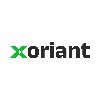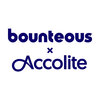
i
Quinnox
Filter interviews by
Quinnox Interview Questions and Answers
24 Interview questions
Mainframe technology refers to powerful computing systems used for large-scale data processing and critical applications.
Mainframes are known for their high reliability and availability, often used in banking systems for transaction processing.
They support multiple operating systems and can run thousands of applications simultaneously, such as IBM z/OS.
Mainframes excel in handling large volumes of data, making the...
I have foundational knowledge of mainframe technology, focusing on its architecture, programming languages, and applications in enterprise systems.
Familiar with COBOL, a primary language used in mainframe applications.
Understanding of JCL (Job Control Language) for job scheduling and management.
Experience with DB2 for database management on mainframes.
Knowledge of CICS (Customer Information Control System) for tra...
Yes, I am comfortable with traveling and working different shifts as it enhances my adaptability and experience in diverse environments.
I have previously worked on projects that required travel to client sites, which improved my understanding of their needs.
I am flexible with shifts; for instance, I have worked night shifts during critical project phases to ensure timely delivery.
Traveling allows me to collaborate...
Stored procedures perform actions, while functions return values and can be used in expressions.
Stored procedures can perform operations like INSERT, UPDATE, DELETE, while functions are typically used for calculations.
Functions must return a value, whereas stored procedures do not have to return anything.
Stored procedures can have input and output parameters, while functions can only have input parameters.
Example ...
A schema defines the structure of a database, including tables, fields, and relationships. Yes, databases can share schemas.
A schema is a blueprint of how data is organized in a database.
It includes definitions of tables, columns, data types, and relationships.
For example, a 'User' table might have columns like 'UserID', 'Name', and 'Email'.
Two databases can share the same schema if they have identical structures ...
Common code for handling 500 errors can be placed in middleware or global exception handling in .NET Core applications.
Use custom middleware to catch exceptions globally and log them.
Implement the 'UseExceptionHandler' method in 'Startup.cs' to define a centralized error handling route.
Utilize 'IApplicationBuilder' to configure error handling in the request pipeline.
Create a global exception filter to handle excep...
Dependency Injection (DI) types include Constructor, Property, and Method Injection, each suited for different scenarios.
Constructor Injection: Dependencies are provided through class constructors. Use when dependencies are required for object creation.
Example: public MyClass(IDependency dep) { ... }
Property Injection: Dependencies are set through public properties. Use when dependencies are optional or can change...
Custom middleware in .NET Core 8 can be registered using the new minimal hosting model without a startup file.
Use the 'WebApplication' class to create the application instance.
Define middleware using the 'app.Use' methods, e.g., 'app.Use(async (context, next) => { ... });'.
Middleware can be registered in the order they should be executed.
Example: 'var app = WebApplication.Create(args); app.UseRouting(); app.Use...
Custom middleware in .NET Core enhances request processing, logging, and error handling for specific scenarios.
Used for logging requests and responses to monitor application performance.
Implemented authentication middleware to validate user tokens before accessing protected routes.
Created custom error handling middleware to catch exceptions and return standardized error responses.
Utilized middleware for CORS (Cros...
Azure App Service is for hosting web apps, while Azure Functions is for serverless computing and event-driven applications.
Azure App Service is designed for hosting web applications, REST APIs, and mobile backends.
Azure Functions is a serverless compute service that runs code in response to events or triggers.
App Service supports various frameworks like .NET, Node.js, PHP, and Python, while Functions can run code ...
Quinnox Interview Experiences
35 interviews found
I appeared for an interview in May 2025, where I was asked the following questions.
- Q1. Can you explain the architecture of your project?
- Ans.
The project follows a layered architecture with separation of concerns, utilizing .NET Core for web APIs and data access.
1. Presentation Layer: Handles user interface and API endpoints, using ASP.NET Core MVC.
2. Business Logic Layer: Contains services that implement business rules, e.g., UserService for user management.
3. Data Access Layer: Interacts with the database using Entity Framework Core, e.g., Repository patte...
- Q2. What are the differences between Azure App Service and Azure Functions?
- Ans.
Azure App Service is for hosting web apps, while Azure Functions is for serverless computing and event-driven applications.
Azure App Service is designed for hosting web applications, REST APIs, and mobile backends.
Azure Functions is a serverless compute service that runs code in response to events or triggers.
App Service supports various frameworks like .NET, Node.js, PHP, and Python, while Functions can run code in mu...
- Q3. In what scenarios have you utilized custom middleware, and what is the process for registering it in .NET Core?
- Ans.
Custom middleware in .NET Core enhances request processing, logging, and error handling for specific scenarios.
Used for logging requests and responses to monitor application performance.
Implemented authentication middleware to validate user tokens before accessing protected routes.
Created custom error handling middleware to catch exceptions and return standardized error responses.
Utilized middleware for CORS (Cross-Ori...
- Q4. How can custom middleware be registered in .NET Core 8 when the startup file is not present?
- Ans.
Custom middleware in .NET Core 8 can be registered using the new minimal hosting model without a startup file.
Use the 'WebApplication' class to create the application instance.
Define middleware using the 'app.Use' methods, e.g., 'app.Use(async (context, next) => { ... });'.
Middleware can be registered in the order they should be executed.
Example: 'var app = WebApplication.Create(args); app.UseRouting(); app.UseAutho...
- Q5. What are the different types of Dependency Injection, and in what scenarios should each type be used?
- Ans.
Dependency Injection (DI) types include Constructor, Property, and Method Injection, each suited for different scenarios.
Constructor Injection: Dependencies are provided through class constructors. Use when dependencies are required for object creation.
Example: public MyClass(IDependency dep) { ... }
Property Injection: Dependencies are set through public properties. Use when dependencies are optional or can change over...
- Q6. Where should common code be placed to handle a 500 Error exception in the absence of a try-catch block?
- Ans.
Common code for handling 500 errors can be placed in middleware or global exception handling in .NET Core applications.
Use custom middleware to catch exceptions globally and log them.
Implement the 'UseExceptionHandler' method in 'Startup.cs' to define a centralized error handling route.
Utilize 'IApplicationBuilder' to configure error handling in the request pipeline.
Create a global exception filter to handle exceptions...
- Q7. What is a schema in the context of a database, and can two databases share the same schema?
- Ans.
A schema defines the structure of a database, including tables, fields, and relationships. Yes, databases can share schemas.
A schema is a blueprint of how data is organized in a database.
It includes definitions of tables, columns, data types, and relationships.
For example, a 'User' table might have columns like 'UserID', 'Name', and 'Email'.
Two databases can share the same schema if they have identical structures but m...
- Q8. What is the difference between a stored procedure and a function?
- Ans.
Stored procedures perform actions, while functions return values and can be used in expressions.
Stored procedures can perform operations like INSERT, UPDATE, DELETE, while functions are typically used for calculations.
Functions must return a value, whereas stored procedures do not have to return anything.
Stored procedures can have input and output parameters, while functions can only have input parameters.
Example of a ...
- Q9. Can we pass a list of objects from .NET code directly to a database, and if so, how can this be accomplished?
- Ans.
Yes, we can pass a list of objects to a database using Entity Framework or ADO.NET in .NET Core.
Use Entity Framework Core to map your objects to database tables.
Example: dbContext.AddRange(listOfObjects);
Use ADO.NET with SqlCommand for bulk inserts.
Example: SqlBulkCopy for efficient bulk data transfer.
- Q10. What are the differences between clustered and non-clustered indexes?
- Ans.
Clustered indexes store data rows in sorted order, while non-clustered indexes maintain a separate structure for quick lookups.
Clustered indexes determine the physical order of data in a table.
A table can have only one clustered index, as data rows can be sorted in only one way.
Non-clustered indexes create a separate structure that points to the data rows, allowing multiple non-clustered indexes per table.
Example: A cl...
I appeared for an interview in Feb 2025, where I was asked the following questions.
- Q1. ❌ Lack of Communication – Companies ignore calls and emails, making it difficult for candidates to get any clarity.
- Q2. ❌ False Hope – They keep candidates engaged without any real intention of hiring them, leading to disappointment.
Interview Preparation Tips
(2 Questions)
- Q1. Architect on webmethod
- Ans.
WebMethods architecture involves integration, process automation, and service-oriented architecture for enterprise applications.
WebMethods provides a suite of tools for integrating various applications and data sources.
It supports service-oriented architecture (SOA) principles, allowing for reusable services.
Example: Using webMethods Integration Server to connect SAP and Salesforce for seamless data flow.
It includes fe...
- Q2. Pub sub model
(2 Questions)
- Q1. End to end flow
- Q2. Flow steps
Interview Preparation Tips
I appeared for an interview before Jul 2024, where I was asked the following questions.
- Q1. What was your Project in Final Year
- Q2. Tech related Questions
Interview Preparation Tips
I applied via Naukri.com and was interviewed in Aug 2024. There was 1 interview round.
(7 Questions)
- Q1. What are AWS layers
- Ans.
AWS Layers are a way to centrally manage code and data that is shared across multiple functions in AWS Lambda.
AWS Layers allow you to separate out common code or dependencies from your Lambda functions.
You can create layers with libraries, custom runtimes, or other dependencies that can be reused across multiple functions.
Layers can be versioned and shared across multiple functions in the same AWS account.
- Q2. Nodejs lifecycle
- Q3. Nodejs Event loop`
- Q4. MongoDb queries like index, find documents etc
- Q5. What are the AWS queue and their types
- Ans.
AWS queues are messaging services that decouple components of a cloud application.
Amazon SQS (Simple Queue Service) - fully managed message queuing service
Amazon SNS (Simple Notification Service) - pub/sub messaging service
Amazon MQ - managed message broker service
Amazon Kinesis - real-time data streaming service
- Q6. What are the difference between MySql and NoSql
- Ans.
MySql is a relational database management system while NoSql is a non-relational database management system.
MySql is table-based and uses structured query language (SQL) for querying data.
NoSql is document-based, key-value pairs, wide-column, or graph-based and does not require a fixed schema.
MySql is suitable for complex queries and transactions, while NoSql is better for large amounts of unstructured data and horizon...
- Q7. Nodejs Programming questions like sorting etc
Skills evaluated in this interview
I appeared for an interview in Apr 2025, where I was asked the following questions.
- Q1. After 5 years where you see urself
- Q2. What are your strengths
I applied via Naukri.com and was interviewed in Aug 2024. There was 1 interview round.
Consists og 40 question mcq 1,Aptitude,2.Logical ,3.Database
Interview Preparation Tips
(2 Questions)
- Q1. Oops basic explain
- Ans.
Object-Oriented Programming (OOP) is a programming paradigm based on the concept of 'objects', which can contain data and code.
OOP focuses on creating reusable code through the use of classes and objects.
Encapsulation, inheritance, and polymorphism are key principles of OOP.
Examples of OOP languages include Java, C++, and Python.
- Q2. Ternary operation
I appeared for an interview in Nov 2024, where I was asked the following questions.
- Q1. Where do you see yourself in 5 years
- Q2. Skill set you have
Interview Preparation Tips
I applied via Approached by Company and was interviewed in Jan 2024. There were 2 interview rounds.
(1 Question)
- Q1. Only gathered details about competition
To create entire marketing budget and plan
Interview Preparation Tips
Top trending discussions






Quinnox Interview FAQs
Some of the top questions asked at the Quinnox interview -
The duration of Quinnox interview process can vary, but typically it takes about less than 2 weeks to complete.
Tell us how to improve this page.
Quinnox Interviews By Designations
- Quinnox Software Trainee Interview Questions
- Quinnox Senior Consultant Interview Questions
- Quinnox Software Developer Interview Questions
- Quinnox Intern Interview Questions
- Quinnox Software QA Engineer Interview Questions
- Quinnox Business Associate Interview Questions
- Quinnox Marketing Head Interview Questions
- Quinnox Data Analyst Interview Questions
- Show more
Interview Questions for Popular Designations
- Software Trainee Interview Questions
- Senior Consultant Interview Questions
- Executive Interview Questions
- Team Lead Interview Questions
- Software Developer Interview Questions
- Senior Associate Interview Questions
- Associate Software Engineer Interview Questions
- Graduate Engineer Trainee (Get) Interview Questions
- Show more
Overall Interview Experience Rating
based on 30 interview experiences
Difficulty level
Duration
Interview Questions from Similar Companies
Quinnox Reviews and Ratings
based on 425 reviews
Rating in categories
|
Senior Consultant
622
salaries
| ₹10.1 L/yr - ₹18.5 L/yr |
|
Consultant
234
salaries
| ₹4.5 L/yr - ₹10 L/yr |
|
Lead Consultant
173
salaries
| ₹16 L/yr - ₹26 L/yr |
|
Manager
55
salaries
| ₹19.7 L/yr - ₹32 L/yr |
|
Software Engineer
53
salaries
| ₹3.7 L/yr - ₹8 L/yr |

Xoriant

Photon Interactive

CitiusTech

Iris Software
- Home >
- Interviews >
- Quinnox Interview Questions











